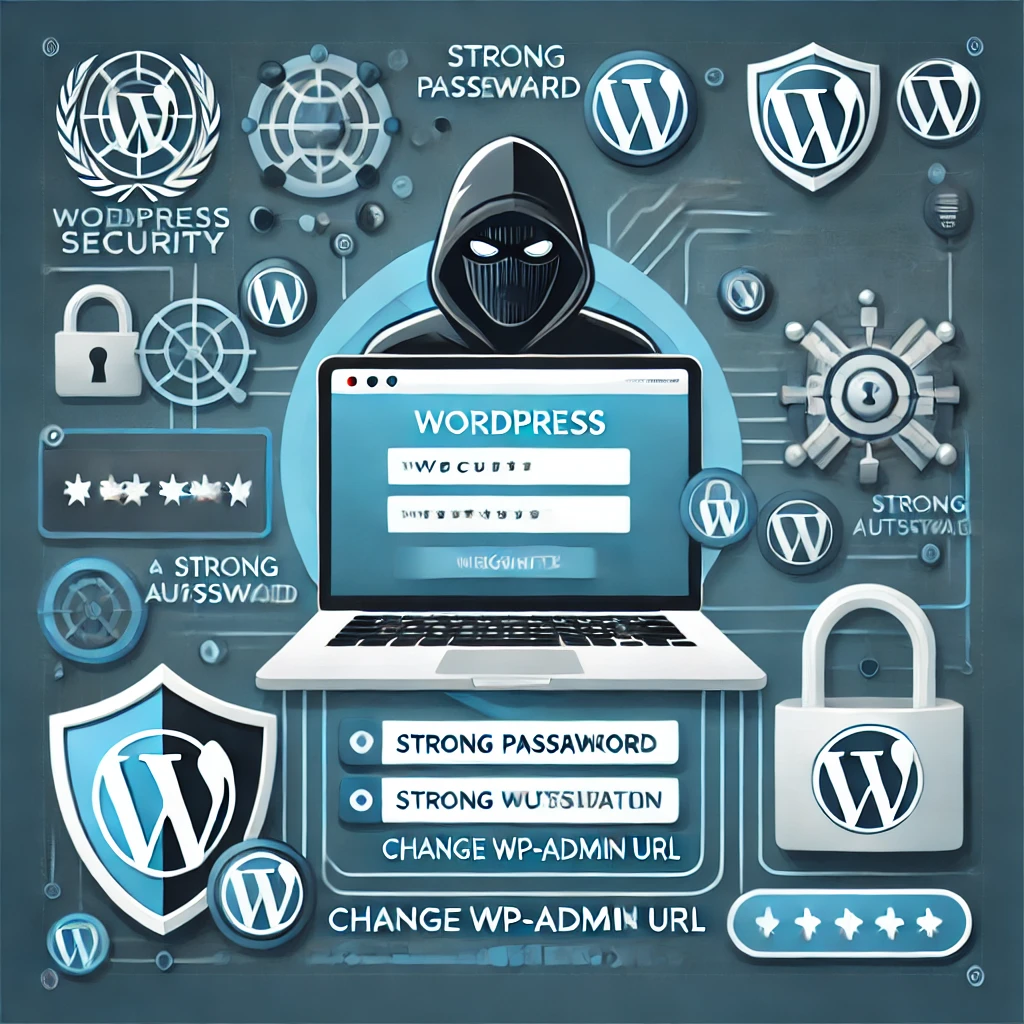WordPress is one of the most popular content management systems (CMS) worldwide, making it a prime target for hackers. One of the easiest yet effective ways to enhance your WordPress security is by changing the default wp-admin URL. In this guide, we’ll explore why this is important and other crucial steps to safeguard your website.
Why Change the Default WP-Admin URL?
By default, every WordPress website has a login page accessible via yourwebsite.com/wp-admin or yourwebsite.com/wp-login.php. Attackers often use brute-force attacks to guess usernames and passwords. Changing the URL makes it significantly harder for bots and malicious users to find your login page.
How to Change the WP-Admin URL
There are several ways to modify the WordPress admin login URL:
1. Using a Security Plugin (Recommended)
One of the easiest ways to change the login URL is by using a security plugin. Popular options include:
- WPS Hide Login
- iThemes Security
- All In One WP Security & Firewall
Steps:
- Install and activate the chosen plugin.
- Navigate to the plugin settings.
- Change the login URL to something unique (e.g., yourwebsite.com/my-secret-login).
- Save the changes and test the new URL.
2. Manually Changing the Login URL via .htaccess (Advanced Users)
For those comfortable with coding, you can manually change the URL via your .htaccess file:
- Access your website via FTP or cPanel.
- Open the .htaccess file in the root directory.
- Add the following rule:
RewriteRule ^new-login$ wp-login.php [L] - Replace
new-loginwith your preferred URL. - Save the changes and test the new login page.
Additional WordPress Security Measures
1. Use Strong Passwords and Two-Factor Authentication (2FA)
Ensure that all users have strong passwords. Implement 2FA using plugins like Google Authenticator or Wordfence Security for added protection.
2. Limit Login Attempts
Use a plugin like Limit Login Attempts Reloaded to restrict the number of failed login attempts. This prevents brute-force attacks.
3. Disable XML-RPC
Hackers use XML-RPC to execute brute-force attacks. Disable it by adding this line to your .htaccess file:
<Files xmlrpc.php>
Order Deny,Allow
Deny from all
</Files>
4. Keep WordPress, Plugins, and Themes Updated
Regularly update your WordPress core, plugins, and themes to patch security vulnerabilities.
5. Change Default “Admin” Username
If your WordPress administrator username is admin, change it immediately. Hackers often target this default username.
6. Set Up a Web Application Firewall (WAF)
A WAF like Cloudflare or Sucuri adds an extra layer of security by filtering malicious traffic before it reaches your site.
7. Backup Your Website Regularly
Use backup plugins like UpdraftPlus or VaultPress to schedule automatic backups.
Final Thoughts
Changing the default wp-admin URL is a simple yet effective step toward securing your WordPress website. However, security doesn’t stop there—combining this measure with other best practices ensures that your site remains safe from cyber threats.
By implementing these security tips, you significantly reduce the risk of unauthorized access and potential website breaches. Stay proactive and keep your WordPress site protected!
Would you like recommendations for specific plugins or security services based on your site’s needs? Let me know!

